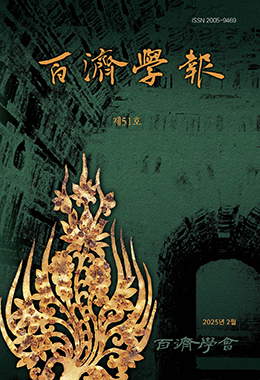이글의 목적은 백제 한성기 중앙과 지방에서 확인되는 횡혈식석실의 축조 양상을 통해서 양 지역의 조영 집단을 비교하고자 하였다.
백제 한성기의 중앙인 한성지역은 풍납동 토성과 몽촌토성을 중심으로 한강 중류에 위치한다. 지방의 여러 지역 가운데 세종의 나성리일대는 지방 거점인 나성리 유적을 중심으로 금강 중류지역에 위치하며, 한성 지역과 비슷한 면적의 크기를 가진다. 두 지역의 중심 고분군으로 알려진 감일동 고분군과 한솔동 고분군은 백제 한성기 중앙과 지방에서 각각 유일하게 대규모로 횡혈식석실이 확인된다. 또한 중요 도시유적의 근처에 새로운 묘제인 횡혈식석실이 대규모로 조영된 점 등, 두 지역이 비슷한 점이 많기 때문에, 두 지역 횡혈식석실의 세부 구조(입지, 분구 및 석실 축조 위치, 묘도와 연도, 현실과 천정, 내부 구조)의 비교를 통해 한성기 횡혈식석실의 속성들을 검토하였다.
그 결과 횡혈식석실을 구성하는 데 필요한 기본적인 축조기법(반지하식, 벽체 및 천정 쌓기, 석재 선택 등)은 지역에 상관없이 유사성이 확인되었다. 이것은 횡혈식석실을 조영하는 데 공통적인 필수 기술이 국가에 의해 관리되거나 조묘공인 집단 간에 기술 공유가 이루어지고 있었을 가능성을 시사한다. 한편 동일한 고분군에서 조영되었음에도 불구하고 세부 구조에서 차이점이 확인되는 경우가 있는데, 기술의 숙련도, 지역간 차이, 복수의 조묘 공인 집단의 존재 가능성 등이 검출되었다.
감일동 고분군의 횡혈식석실은 주로 한성 지역에서만 조영되는 배타성을 가지는 대신 구조적으로 완성도가 높고 통일성을 보인다. 반대로 한솔동 고분군의 횡혈식석실은 다양한 세부 구조가 나타난다. 감일동 고분군의 피장자 집단과 조묘 공인 집단은 동일 계통을 가지며, 조묘 공인 집단은 주로 한성 지역을 중심으로 활동하였으며, 기술적 통일성 및 숙련도가 높다. 반면, 한솔동 고분군의 피장자 집단과 조묘 공인 집단은 서로 다른 계통이며, 각 집단들 역시 복수로 존재하였을 가능성이 높다. 한편 현실 내부 구조 가운데 현실 바닥에 시설된 부석에 의한 공간 구조 분할은 피장자(집단)의 의도가 반영된 것으로 보인다. 한솔동 고분군의 횡혈식석실에서 다양한 내부구조가 확인되는 것은 나성리 유적을 건설과 경영에 관련된 제 세력들이 물리적으로는 하나의 세력을 이루었지만, 완전히 융합되지 못했기 때문에, 장법과 제의가 피장자(집단)별로 달랐던 것이 내부구조의 다양성으로 드러난 것으로 생각된다.
The purpose of this article is to compare the building groups of the two regions by examining the construction patterns of the Stone chamber with corridor found in the Hanseong period during the Baekje central area and local area.
The central area of Baekje during the Hanseong period is located in the middle reaches of the Han River, centered around the Pungnap-dong earthen fortress and Mongchon earthen fortress. Among the various regions of the local area, the Nasaeng-ri area in Sejong is located along the middle reaches of the Geum River, centered around the regional hub, the Nasaeng-ri archaeological site, and has a size similar to that of the Hanseong area. The Gamildong Tumuli and Hansoldong Tumuli, known as the central burial mounds of two regions, are the only large-scale examples of stone chamber with corridor identified in the Baekje Hanseong period, both in the central and local areas. In addition, due to the similarities between the two regions, such as the large-scale construction of Stone chamber with corridor tombs in the vicinity of important city ruins, a comparison of the detailed structures of Stone chamber with corridor tombs in both regions (geographical location of a tomb, mound and chamber construction position, cemetery passage and stone chamber passageway, walls and ceiling, and internal structure) was conducted to examine the characteristics of the Stone chamber with corridor tombs from the Hanseong period.
The basic construction techniques required to build a Stone chamber with corridor (such as semi-subterranean construction, wall and ceiling stacking, and stone selection) were found to be similar regardless of the region. This suggests that the common essential techniques for constructing stone chamber with corridor may have been managed by the state or shared among groups authorized for tomb-building. On the other hand, despite being constructed within the same tomb group, differences in the detailed structure have been identified. This suggests the possibility of variations in the level of craftsmanship, regional differences, or the existence of multiple authorized tomb-building groups.
The stone chamber with corridor in the Gamildong tomb group exhibit an exclusivity that is primarily found only in the Hanseong region, while also demonstrating high structural completeness and unity. In contrast, the stone chamber with corridor in the Hansoldong tomb group show a variety of detailed structures. The burial group and the tomb-building group of the Gamildong tomb group share the same lineage, with the tomb-building group primarily active around the Hanseong region, demonstrating high technical unity and proficiency. In contrast, the burial group and the tomb-building group of the Hansoldong tomb group belong to different lineages, and it is likely that multiple groups existed within each. On the other hand, the spatial division created by the placed stones (stones laid on the floor) within the interior structure of the tomb room appears to reflect the intentions of the deceased (or the burial group). The variety of internal structures observed in the Stone chamber with corridor of the Hansoldong tomb group is believed to result from multiple factions involved in the construction and management of the Najeong-ri site. While these factions physically merged into one force, they were not fully integrated. This likely led to different burial methods and ritual practices for each burial group, which is reflected in the diverse internal structures of the Stone chamber with corridor.




